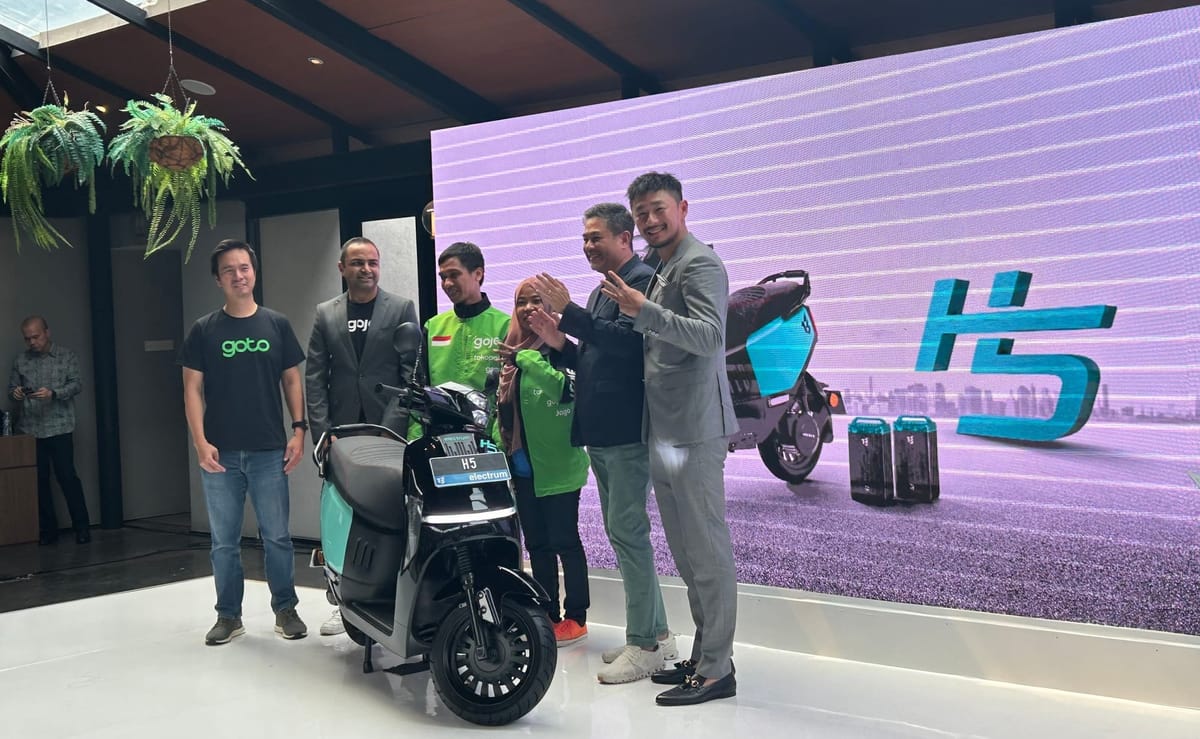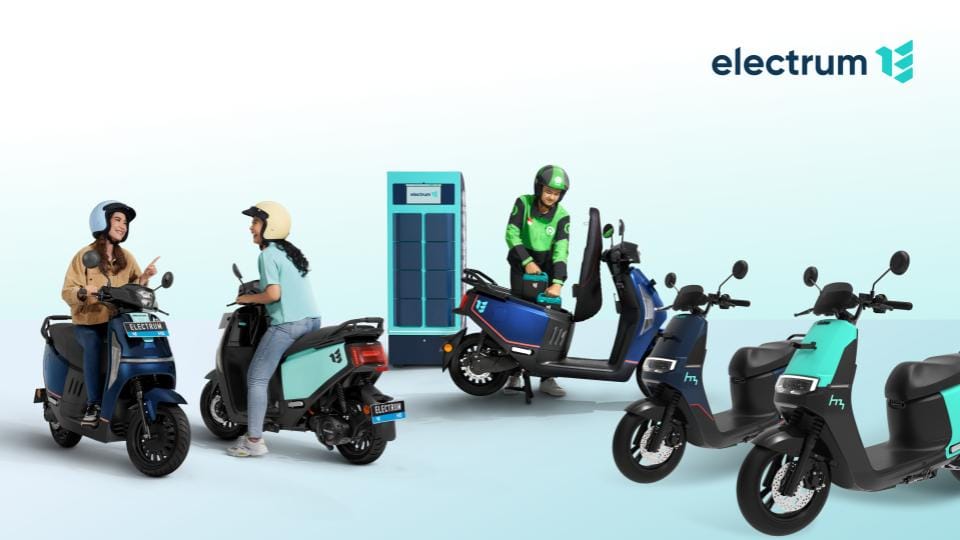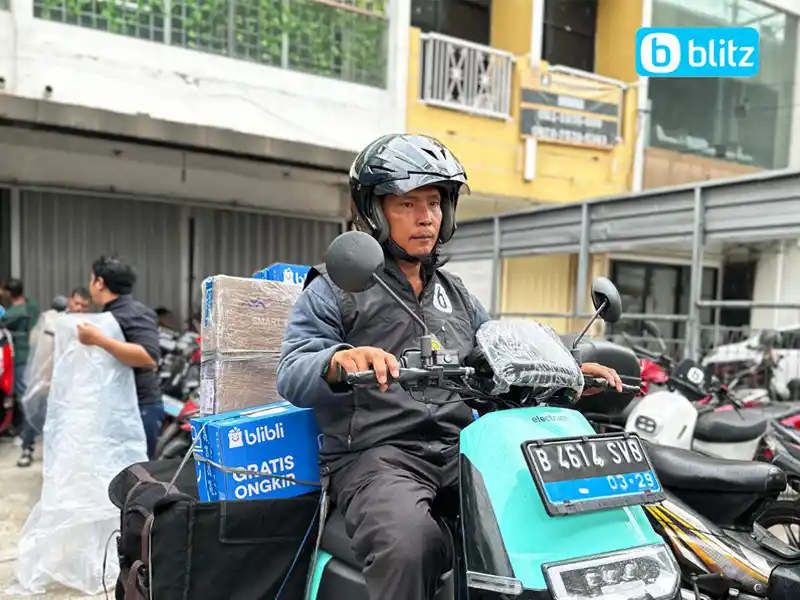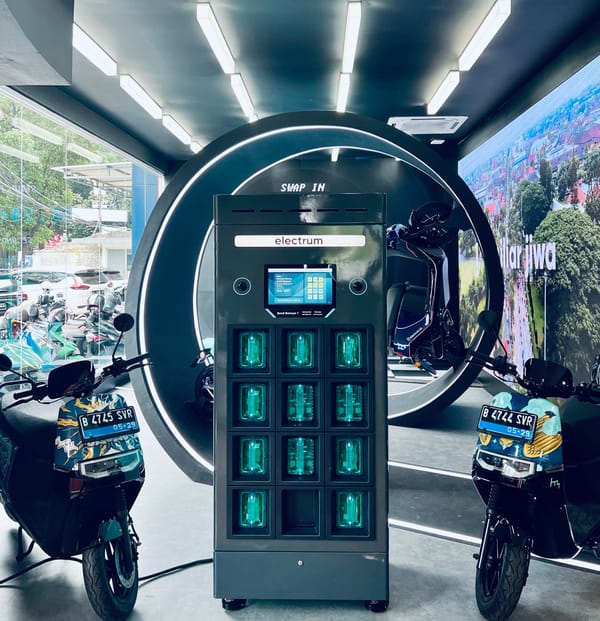From Silicon Valley to Jakarta: Driving Sustainable Mobility in Indonesia

When I look back on my career—from steering global expansion at Uber in Silicon Valley to leading hardware-software innovations at Mobike in China—I see a continuous theme of transforming how cities move. Now, as CEO of Electrum, I’m applying those lessons to build an electric motorcycle and battery-swapping ecosystem in Jakarta, one of the most vibrant yet complex urban environments in the world.
A Path Shaped by Global Mobility
My experiences at Uber and Mobike share more than the “mobility” label. At Uber, I drove global growth, launching our service in new regions, including China and Southeast Asia. That role taught me the importance of swift execution: a bold vision means little without relentless focus and rapid iteration. I also saw how ride-hailing could reshape urban transportation, offering flexible, on-demand mobility.
At Mobike, where I served as Vice President of Product, I discovered how hardware innovations could unlock entirely new business models. By equipping 10 million shared bikes with IoT connectivity, we collected real-time data on location and usage—optimizing fleet distribution, maintenance, and user experience. Mobike’s eventual acquisition by Meituan for USD 2.7 billion underscored the power of combining software and hardware at scale.
From these experiences, I carried forward two essential principles: be data-driven and user-centric, and move with fierce, precise execution. Whether in California, China, or Jakarta, these are the foundations that help solve real-world problems efficiently.
Why Jakarta?
Indonesia is the world’s third-largest motorcycle market, after China and India. In Indonesia, there are roughly ten times more motorcycles than cars, and they play an outsized role in daily transport. I first noticed this when launching Uber in Southeast Asia in 2016. Local competitors, like Gojek and Grab, used motorcycles for ride-hailing, food delivery, and last-mile logistics—services vital to the bustling city.
Yet this dependence on motorcycles has also contributed to pollution, noise, and carbon emissions. I began imagining a cleaner, quieter Jakarta: What if all those motorcycles were electric? It felt like a leap given Jakarta’s tight infrastructure and limited EV adoption. But in 2022, the door opened when Gojek and TBS formed a joint venture to electrify two-wheelers. They needed someone with product development and global mobility expertise. That’s how I joined Electrum at its inception.
Electrum’s Mission: Decarbonizing Two-Wheeler Mobility

In 2024, Electrum reached a major milestone by expanding its battery-swapping network to 280 stations and delivering over 5,000 EV motorcycles in Jakarta—reinforcing our commitment to cleaner, more efficient transport. Our users conduct more than 15,000 battery swaps and ride more than 380,000 kilometers per day, that’s a one-way trip to the Moon. As a result, we offset 20 tons of carbon dioxide daily. Building on this momentum, we aim to help Indonesia—and eventually other emerging markets—reduce carbon emissions by electrifying two-wheel transport. Our approach involves:
Battery Swapping Network. We’re building citywide battery-swapping stations that let riders exchange a depleted battery for a fully charged one in minutes. This eliminates long charging waits and tackles range anxiety.
State-of-the-Art EV Motorcycles. Our focus is on capable, affordable, and reliable bikes that match or beat the total cost of ownership of traditional motorcycles. We use high-quality LG/Samsung NCM battery cells, ensuring performance and peace of mind.
Energy Infrastructure Innovation. By operating and standardizing battery designs and swapping protocols, we aim to accelerate EV adoption, bringing sustainable energy to millions of households. Ultimately, we want to become the de facto public EV infrastructure for two-wheelers in Indonesia.
Why Battery Swapping?
Indonesia’s grid is far from ideal for conventional charging. Many households have only 900–1,300 watts of capacity—insufficient for overnight EV charging without risking power outages. Dense urban planning also complicates building large charging stations. Battery swapping solves both problems. It centralizes charging in stations designed for higher capacities, letting riders get back on the road within minutes. Moreover, standardizing battery modules has environmental and economic benefits. Reusing and recycling battery components reduces waste over the vehicle’s lifecycle. When the energy itself comes from cleaner sources, the system’s overall carbon footprint declines further.
Standing Out in a Competitive Field
Electrum differentiates itself in two main ways:
Convenience-Centric Battery Swapping. Our stations cool batteries with air circulation, ensuring optimal temperatures and reliable performance. For commercial fleets and everyday users, minimal downtime is a game-changer. This approach offers a seamless experience to individuals who can’t afford lengthy charging or who lack the infrastructure at home.
Affordable, High-Quality EV Motorcycles. We strive to make electric bikes more cost-effective than their Honda or Yamaha gas equivalents. That means refining everything from supply chains to design choices so we deliver durable products at accessible price points. Beyond the motorbike’s hardware, we integrate IoT to manage battery health, gather usage data, and optimize service intervals.
A Culture of Experimentation and Unit Economics
Our 5,000 bikes and 280 swapping stations are just a snapshot of our trajectory. One of our most significant achievements is our A/B testing mindset for hardware development. We consistently trial different battery chemistries, bonding techniques, and station setups. IoT sensors collect real-world data, guiding improvements in reliability and cost.
Simultaneously, we’re ensuring that every innovation supports our unit economics. Each quarter, we iterate on hardware and operations to trim costs and boost revenue. In an emerging market, financial sustainability is non-negotiable: to scale effectively, your solution must be both environmentally and economically robust.
Defining Sustainable Mobility for Emerging Markets
For us, “sustainable mobility” is about offering a solution that:
Improves Quality of Life: Electric motorcycles are quieter and cleaner, reducing noise and fumes that hamper daily commutes.
Remains Financially Accessible: It should save users money over time, especially in the delivery and ride-hailing sectors.
Emphasizes Reuse and Recycling: Our hardware is built with a circular approach, reusing and recycling batteries whenever possible.
Draws on Cleaner Energy: Integrating solar or other renewable sources into our network is a future objective.
Beyond Two-Wheelers
The technology we’re developing—particularly in standardized swappable batteries—could power other vehicle types, from three-wheeled cargo carriers to compact four-wheelers for last-mile logistics. Our IoT systems also have potential to reshape urban planning. By analyzing real-time data, city officials could improve traffic flow, allocate parking more intelligently, and even predict demand for future EV infrastructure.
If we can succeed in Indonesia, where grid limitations and dense urban living demand ultra-efficient solutions, we can replicate our model across other emerging markets. The ultimate goal is to create a global blueprint for accessible, sustainable mobility in cities wrestling with pollution and infrastructure constraints.
Our second-life batteries, repurposed from the mobility sector, offer affordable and sustainable energy solutions tailored to the needs of off-grid SMEs and communities requiring cost-effective, low-discharge energy storage.
They power “kaki lima” (street vendors) by providing energy for cooking, lighting, and connectivity, serve as affordable storage for telecom towers, and support renewable-powered microgrids for clinics, schools, and agricultural irrigation across Indonesia’s many geographic areas.
These versatile solutions enhance productivity, drive economic growth, reduce e-waste, and advance a circular energy economy, unlocking significant benefits for underserved communities.
Conclusion: Building the Future of Urban Transport
Electrum’s story is still being written, but it’s rooted in my global experiences at Uber and Mobike—companies that used technology to redefine mobility on an international scale. Now, we’re innovating at the intersection of hardware, software, and energy, tackling some of the hardest challenges in making EV motorcycles mainstream.
Jakarta is more than just a tough testing ground; it’s a massive opportunity. We aim to demonstrate that electric mobility—especially when powered by battery swapping—can thrive in a market with tight space, limited grid capacity, and budget-conscious consumers. By uniting user-centric design, data-driven insights, and fierce execution, we’re forging a more sustainable path for everyday travel.
If you share this vision for cleaner, more efficient transportation, I invite you to follow Electrum’s journey. Together, we can help Indonesia transition away from subsidized fuel and oil imports, boost local economies, and provide a model that other cities can adapt and scale. It’s time to build a future where streets are quieter, air is cleaner, and a bustling metropolis like Jakarta can stand as a beacon of sustainable mobility for the world.


